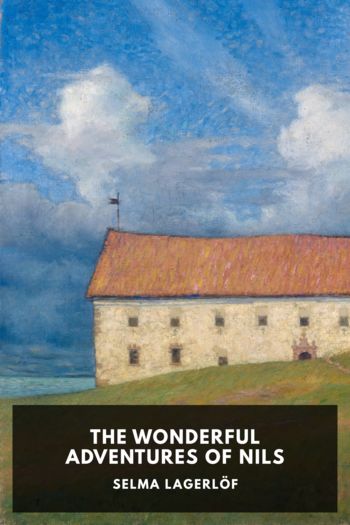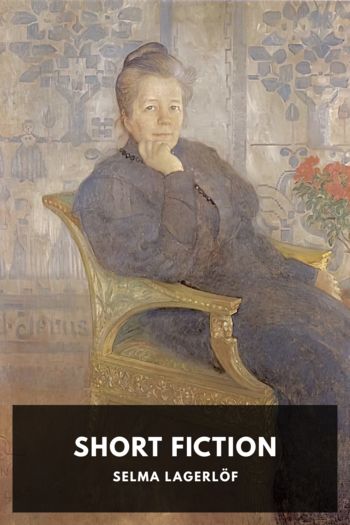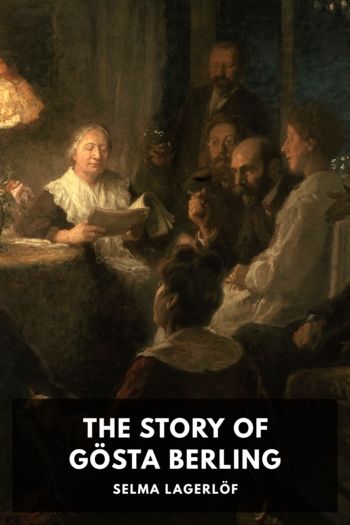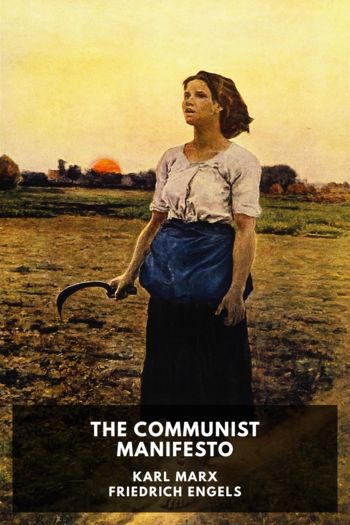The Wonderful Adventures of Nils by Selma Lagerlöf (i can read book club TXT) 📕

- Author: Selma Lagerlöf
Book online «The Wonderful Adventures of Nils by Selma Lagerlöf (i can read book club TXT) 📕». Author Selma Lagerlöf
Another critic says: “Beyond all doubt, Nils Holgersson’s Journey is one of the most noteworthy books ever published in our language. I take it, that no other nation has a book of this sort. One can make this or that comment on one and another phase of it, but the whole impresses one as so masterful, so great, and so Swedish, that one lays the book down with a sense of gratitude for the privilege of reading such a thing. There is a deep undercurrent of Swedish earnestness all through this tale of Nils Holgersson. It belongs to us. It is a part of us.”
Ny Tid writes: “Selma Lagerlöf’s book contains just as much information—no, twice as much—as the old readers. It acquaints the children with Sweden’s nature; it interests them in its bird world—both tame and wild; in its domestic and forest animals, even in its rats. It explains its vegetation, its soil, its mountain-formations, its climatic conditions. It gives you customs, superstitions and the folklore in different sections of the country. It takes in farming industry, manors and factories; cities and peasant-cabins, and even dog-kennels. It has a word for everything; an interest in, and for, everything. For, mark you, this book has not been patched together by the dilettante, by committees … It was written by a highly gifted, warmhearted seer, to whom the child-nature has not been a murky pool to fish in, but a clear, impressionable mirror. The author has fulfilled her mission in a wholly convincing manner. She has had enough imagination and skill to blend all the dry travel and nature material into the harmonious beauty of fable. She knew how to combine the useful with the beautiful, as no pedant of the practical, or the aesthetic, has ever dreamed it. She has converted the absorption of knowledge into a child’s game—a pleasure. Her style throughout is the simplest, the most facile for children to grasp. … Her utterances are hearty without being boisterous; most playful and humorous without being loquacious. Her work is a model textbook; and just therefore, a finished work of art.”
From Göteborg Morgon Posten: “The fame of her literary greatness goes forward without a dissenting voice; fills her own land, and travels far and wide outside its borders … Just as modestly as she points a moral, just so delicately and unobtrusively does she give information. Everything comes to you through the adventures, or through the concrete images of imagination’s all-compelling form. … No one who has retained a particle of his child mind can escape the genuine witchery of the poesy in Nils Holgersson.”
A new history of literature, entitled Frauen der Gegenwart, by Dr. Theodore Klaiber, mentions Miss Lagerlöf as the foremost woman writer of our time, and says that she is receiving the same affectionate homage for her art in other lands, that has been accorded to her in Sweden. Dr. Klaiber does not see in her merely “a dreaming poetess far removed from the world.” He finds her too forceful and courageous for this.
“But she sees life with other eyes than do our up-to-date people. All her world becomes saga and legend. … More than all other modem authors, she has that all-embracing love for everything which never wanes and never wearies.” says Dr. Klaiber.
Torsten Fågelqvist, a well-known Swedish writer, ends his review of the book with these remarks: “Our guide is clear-visioned, many-sided and maternal. She can speak all languages: the language of animals, and the language of flowers; but first and last, childhood’s language. And the best of all is, that under her spell all are compelled to become children.”
Some of the purely geographical matter in the Swedish original of the “The Story of Karr and Grayskin” and subsequent stories has been eliminated from the English version. The author has rendered valuable assistance in cutting certain chapters and abridging others. Also, with the author’s approval, cuts have been made where the descriptive matter was merely of local interest. But the story itself is intact.
Velma Swanston Howard
The Wonderful Adventures of Nils The Boy The ElfSunday, March twentieth.
Once there was a boy. He was—let us say—something like fourteen years old; long and loose-jointed and towheaded. He wasn’t good for much, that boy. His chief delight was to eat and sleep; and after that—he liked best to make mischief.
It was a Sunday morning and the boy’s parents were getting ready to go to church. The boy sat on the edge of the table, in his shirt sleeves, and thought how lucky it was that both father and mother were going away, and the coast would be clear for a couple of hours. “Good! Now I can take down pop’s gun and fire off a shot, without anybody’s meddling interference,” he said to himself.
But it was almost as if father should have guessed the boy’s thoughts, for just as he was on the threshold—ready to start—he stopped short, and turned toward the boy. “Since you won’t come to church with mother and me,” he said, “the least you can do, is to read the service at home. Will you promise to do so?”
“Yes,” said the boy, “that I can do easy enough.” And he thought, of course, that he wouldn’t read any more than he felt like reading.
The boy thought that never had he seen his mother so persistent. In a second she was over by the shelf near the fireplace, and took down Luther’s Commentary and laid it on the table, in front of the window—opened at the service for the day. She also opened the New Testament, and placed it beside the Commentary. Finally, she drew up the big armchair, which was bought at





Comments (0)